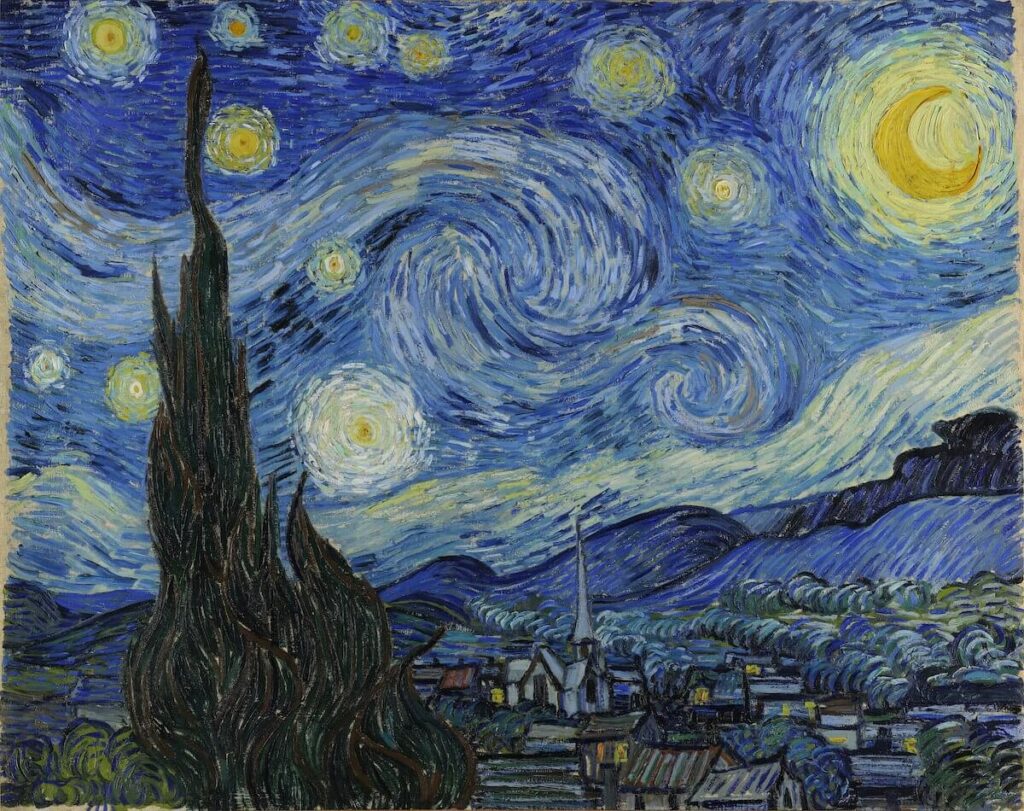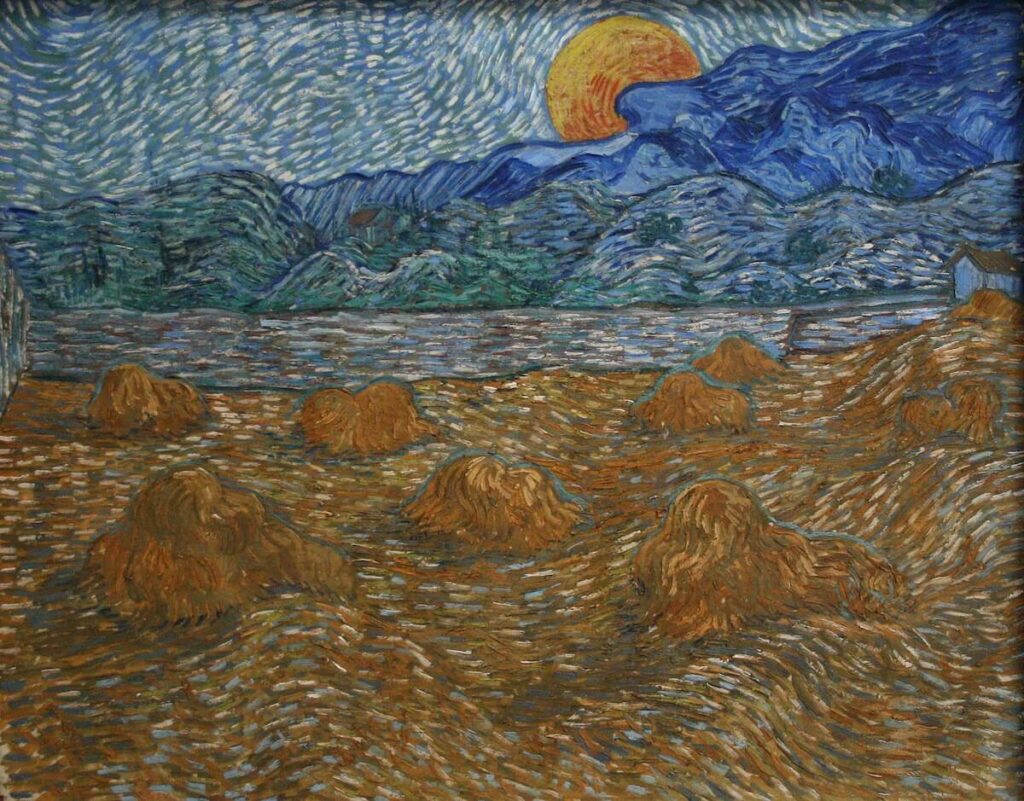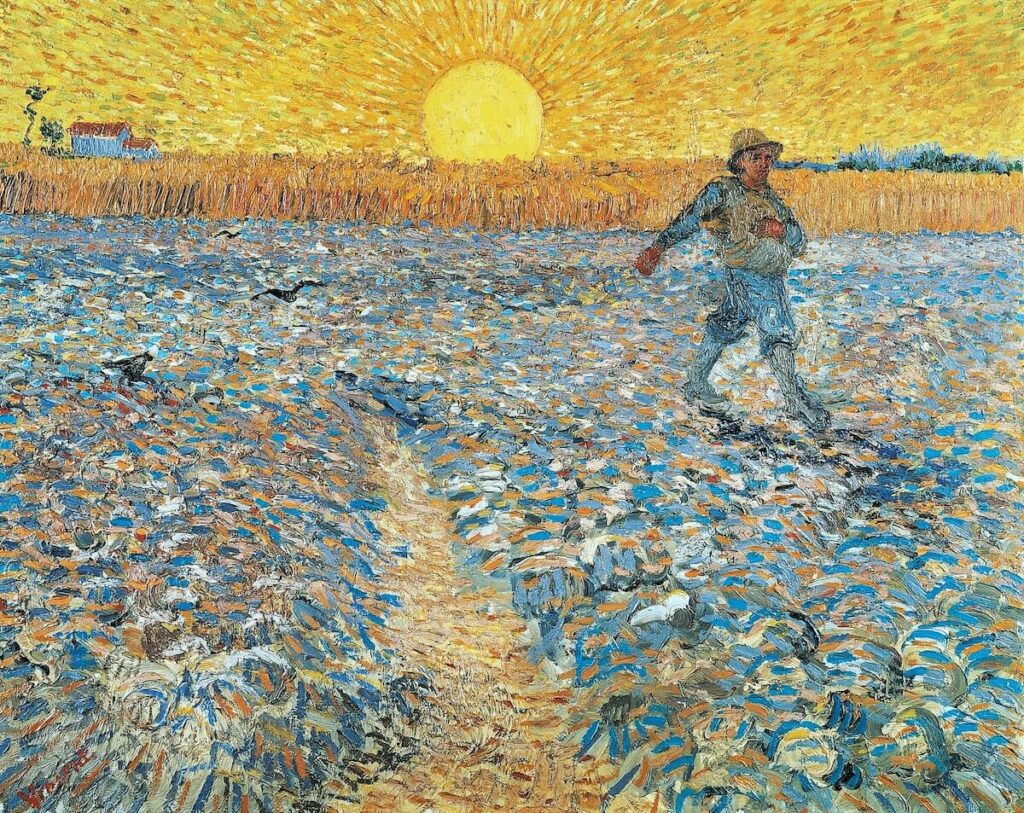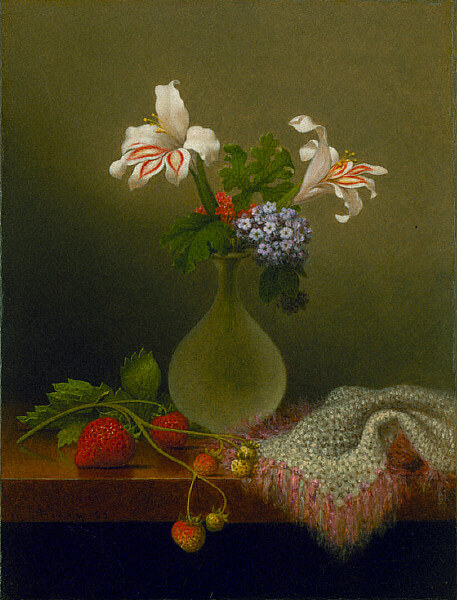Creative Living Beyond the Constant Humdrum of the Daily
- Daily Distractions in Creative Living
- The Muse
- Why Do We Create and How to Persuade the Muse
- Perseverance
- First We Start By Being Unsatisfied
- Then We Fight the Distractions
- We Meditate
- We Focus on The Littlest of Details and Let Results Take Care of Themselves
- It All Comes Together
- The Glory That Comes With Honesty
Daily Distractions
I’ve not been focused on the one thing at hand.
A few years ago my thoughts originated like a beam of sunlight from one idea and reflected onto that one concept only. I used to set off in moments of inspiration and ecstasy. I immersed myself in the topic and poured everything into a draft. If I had multiple ideas, I wrote on many pages.
I published long pieces at the spur of the moment. The Art of Learning, The Little Prince, and Benjamin Franklin’s autobiography — inspired me much. I was thoroughly immersed in those books and that complete submersion let me soak lessons from their depths (linked).
Now I wonder if I ever write on the fleeting inspiration a gust of wind or a falling leaf imbues. Do I go deep enough in a book to have its lessons on my fingertips?
I have allowed myself to be pulled away from my creative routine and energy more often than can be justified. I have had deep weeks and months but a lot of shallow ones, too. And I only have to blame this background thread I’ve woven from environmental variables, domesticities, interpersonal disruptions, and personal disappointments.
While I’m writing on the staircase (because why not), I worry about being in the way of the caretaker who will climb to the terrace to water plants. That we will need to go to the grocery store to buy essentials within the lockdown hour. That I would benefit from writing on the neon grass in the pine jungle. That I haven’t eaten. That I still have to lose weight. That I have to call my parents. That my writing has a long way to go. That some other writers’ follower lists are longer than mine. That my task list is lengthening like a river. And other minutiae that don’t need my attention right now (or ever). When my internet connection is on, I Google search flying squirrels, eggplant recipes, celebrity news, and Amazon delivery times.
Miniature problems of domesticity, personal setbacks, and background noises bother us daily. But if we get caught up in the fleeting nature of the day-to-day, we would flit between our work, chores, and emotions incessantly — rather than decisively flowing from one to the other. (Things we can care less about.)
And it’s not just commoners (like me) who are trying to live a creative life but find the mundane overwhelming.
The great writer Edna St. Vincent Millay found ignoring the household hard. “I care an awful lot that things be done right,” she said. “Yet I don’t let my concern break in and ruin my concentration and my temper.” She considered writing poetry an extremely delicate process and took pains not to let everyday worries disrupt it. (Mason Currey described the writer’s routine in his book Daily Rituals Women at Work: How Great Women Make Time, Find Inspiration, and Get to Work.)
I also value the ever-abundant household tasks or the relationship maneuvers and emotional turmoils. I acknowledge life is made up of these. But we can’t have our attention — our conscious and subconscious — caught up in the ubiquitous living details of which millions suffuse a single day.
While work can be restricted between nine to six, or something similar, this apparent paraphernalia of living can expand and fill our entire days (and nights). In that enlarged bubble of the ephemeral now, we will not only lose ourselves, but the sense of our passion, labor, and, concomitantly, self-esteem, too.
Artists, writers, creators, thinkers, coders, scientists, entrepreneurs, and anyone who has to invent, who is living a creative life, has to be at their work every minute with as much energy with which one anticipates a plate full of silky ravioli.
But temporary obsessions creep up our minds. They entangle with important threads. In our haste and human limitations, we don’t know which strand we should pull and which one we should let be. While we should have opinions, we can’t let our judgment, frustrations, and external noises fill our minds and hearts so much we don’t have space left to create. (As Woolf said, we have to draw understanding from all these experiences.)
Even after a tiny diversion, coming back to that exact pixel of thought, that precise shade of the rainbow, that last word that our mind had started to remove the dust from — is hard, almost impossible.
Amidst an overburdened subconscious, a hustling world, and the myriad of emotions at our disposal every moment, there is also this intermittent lack of inspiration, meaning, and direction.
The Muse
An artist’s mind is her canvas and brush, and computer and keyboard. If the mind is bothered or engaged somewhere else other than the art, the muse won’t come. And if the muse has to be attracted, the mind has to be first freed from the trivia and everything else. There has to be space for the muse to enter.
Creating space doesn’t mean we sit hand in hand waiting for inspiration or for someone to say our work is important. Because waiting to let our art become significant before pouring ourselves in is like expecting to taste the creamy sweetness of the pudding before even breaking the bread. First we work and then the result — might — come. (read this when you don’t feel like working.)
The road or the path won’t walk up to us. We have to go. And we go with blind faith.

Why Do We Create and How to Persuade the Muse
We create because we believe we have something important to say. We create because we can’t not create.
We can’t say my paintings or products or stories aren’t read or seen by anyone or so and so. We create as if the world waits upon us. And then it becomes so. We create because there is nothing else we would rather do. We know only we see the starry night like we do.
We sit and write or paint or sketch or run or do whatever that has set our mood in the past. Or we get at the going as if the muse has arrived. If we are at our work, engaged, and avoiding distractions as if we have the most sincere task in the world — as if our life depends on it — as if no one is watching us and if they are, we don’t care — if we work with fun and gaiety, our muse will show up. Seeing us ready, our inspiration will be befooled in thinking it was supposed to be here. It will arrive.
And when we sit long enough, we create. The Venus fills our sky (as it filled Van Gogh’s skies).
To be able to get the muse to come to graze, we have to be available in the pasture playing hours before our inspiration may arise — if at all — from the depths of our unconscious mind.
How to be Creative in Life?
Perseverance (imperative to all creative lifestyles)
Today I didn’t know what I was going to write. But I started scribbling in this document. Now along with this impromptu draft on creating living, I want to fill “what is good writing,” “hard life of the Himalayas,” and “can you imagine this is Bangalore” drafts.
We don’t have to always know. That’s what’s inside will come out when we enable ourselves with a pen or a keyboard or a blade of grass. After a few lines of conscious effort, flows the free waterfall of ideas. And when ideas flow, we type faster than we can. We paint with both hands. We code as if there is no tomorrow.
And our previous work bloom with this fresh spray of spring. We take what fits our purpose, create more on top of it, and that’s all there is.
A little kindle of work — with or without inspiration — can light a fire of creativity.
First We Start By Being Unsatisfied
Our top articles and the paintings we sold and the electrical inventions lined up to be patented — none of this concerns us. We can’t celebrate because we wrote three thousand words in a flow, and that’s more than we had imagined. Or this is the best we could do so let’s pull our minds from the deep well of the topic to let it wander to the next theme. No. No. No.
We create and modify not until we believe we have done the best we can but until we know we have done the best that can be done to the theme.
At the beginning of every day, we promise ourselves we will devote ourselves to meaningful art.

Then We Fight the Distractions
I’m far from being able to express the truth as I imagine it in my mind. Most days I have to fight that background thread. I dig hard for inspiration.
I haven’t, yet, enabled my capabilities to the full. I am only half present. As long as I’m distracted, I won’t be able to put down on the paper honestly what’s on my mind.
All noises will be blocked when we become one with our work.
But how can we ignore the small matters which form the foundations of family, living, loving, and being?
We establish a set of rules.
None of the simple but important matters of everyday living and relationships should take more time than what is needed to find a solution. We take the right course. Then we put the matter aside on every disruptive occasion.
We handle the circumstance. We don’t brood over the event or the outcome.
Future or past and relationships that didn’t work out or hurtful things said to us and our failures or people we don’t like and pending tasks — none of this should be thought of when we are busy with creative work.
If an affair discussed and resolved in the past returns to us, we have to let it get reflected from the walls of our mind without letting it seep into our conscious.
But in the moments of instability, we cannot calm our mind just by telling, “hey, this is not important.” Our mind wants to rethink something explored because it perceives the idea as significant. We have to quietly cajole it by saying, “I know you think the thought is consequential, but we have talked about this before. Nothing has changed. Do you have a credible reason to go over the conclusion again? Mulling over the same stuff won’t bring us peace, as you may believe. But if we shake up the inferred settlements we will end up in a whirlpool of notions. Do you want chaos?”
I’ve used this conversation for my own good many times.
The future cannot be predicted. People who are giving us a hard time have to be dealt with, not thought about. Tasks that are to be done will be finished by working not by worrying about them.
But all of this is easier said than done. Our mind fools us into thinking everything else apart from what we are doing now is important.
What do we do?
We Meditate
A few months ago I couldn’t fall asleep for at least one hour after lying down on the bed. This one-hour insomnia recurred even on days I had worked hard, cooked, exercised, and walked. And because I was falling asleep later than I planned to, I couldn’t get up when I wanted to be in full control of my day.
I started meditating. I focused on my breath. When my mind wandered, I repeated to myself, “getting sleep is more important than going over the past right now. You will disentangle one thread. But one more will be waiting with its fangs out. Getting sleep is more important than going over the past right now.” My brain silenced, and I could fall asleep within minutes.
The only way to stop thinking about something is by practicing controlling your thoughts. Meditation is that.
We Focus on The Littlest of Details and Let Results Take Care of Themselves
Every moment you spend on your work shines on you like the glitter of a star coming from thousands of light years away.
But it isn’t the moments that count as much as the focus in each moment.
The sculptor strikes the chisel every time with utmost attention and accuracy. One wrong chisel and the whole thing would lose its imagined countenance.
For the sculptor every curve of the statue she is making, every hit of the chisel, every raise of the hand, every gust of wind, every dust particle flowing away, the gaze of her eyes, the sparkle of the sun rays, the light in the sky, the shadow of the wing of a crow flying above, the sweat on the sculptor’s palms, the thickness or the dryness of the stone, the sharpness of the chisel — all are important. Is she at the curve of the navel or the fall of the hair? The artist pays attention to it all.
You cannot break the rhythm of a good artist. Even if her thought dares to flicker away from her work for a feather moment, she brings it back and refuses to engage in the inner turmoil agonizing over losing her thought.
That’s what’s gone is gone.
While the artist has the sculpture in her mind, she can see that sculpture alive, walking in front of her, dancing, doing what it needs to do. She doesn’t think about the accolades the art would bring her. She doesn’t hear the claps echoing in the amphitheater. She doesn’t see a sea of crowd bellowing through the streets to get a glimpse of the great one whose sculpture has touched their hearts. She doesn’t notice the news columns singing her praises and hymns.
Do you know what this good artist might be busy with? She would already be chiseling away on her next piece or art. And that is the only way to live.
To be, and not to think how to be – that’s the secret to the creative life.

It All Comes Together
Insomnia, troubles of domesticity, and interpersonal circumstances are only some of the problems every creative mind faces. But by slowly cajoling my mind, focusing on my breath, and giving into the tiniest details of my work, I’m able to refocus my creative energy on what matters. And when we harness our internal energy, we see it beaming from everything outside – including our work.
When everything fades away, our creative energy guides our life and percolates through our being.
The Glory That Comes With Honesty
Whenever you are not paying attention to your work, you are doing it a great dishonor. Dishonor never brings glory.
Our art would know we are being corrupt and she would rather be with someone else. Why would it care for us when we are ready to put every mundane idea above it? Treat your work as your universe. Have fun with it. Focus on right now in this moment.
As soon as we let ourselves dive deep inside, we find the simplest but the most astonishing ideas and truths unravel in front of us. And that’s glory.
“The purpose of art is washing the dust of daily life off our souls.”
Pablo Picasso
How do you live a creative life? Do you think there is something as a creative lifestyle?
Feature Image: Martin Johnson Heade, Public domain, via Wikimedia Commons
*****
My much-awaited travel memoir
Journeys Beyond and Within…
is here!
In my usual self-deprecating, vivid narrative style (that you love so much, ahem), I have put out my most unusual and challenging adventures. Embarrassingly honest, witty, and introspective, the book will entertain you if not also inspire you to travel, rediscover home, and leap over the boundaries.
Grab your copy now!
Ebook, paperback, and hardcase available on Amazon worldwide. Make some ice tea and get reading 🙂
*****
*****
Want similar inspiration and ideas in your inbox? Subscribe to my free weekly newsletter "Looking Inwards"!


